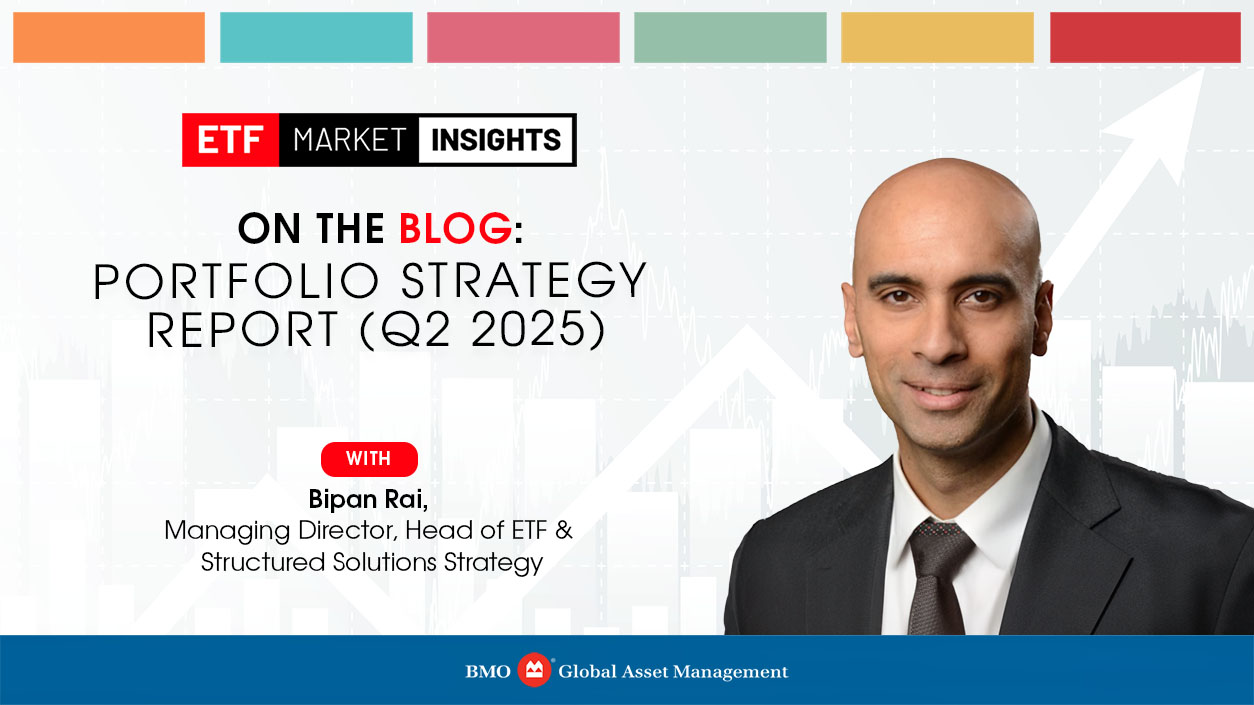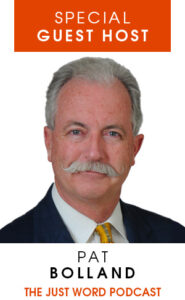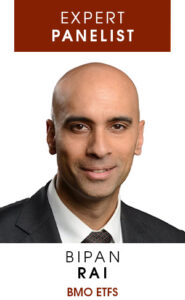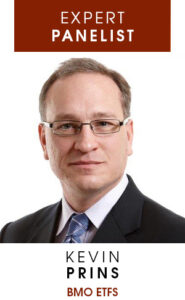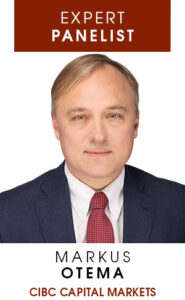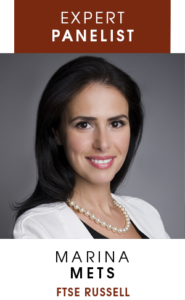All prices, returns and portfolio weights are as of market close on March 31, 2025, unless otherwise indicated.
Caution Over Exuberance
As we update our quarterly portfolio strategy, we’re reminded of an important lesson that often must be re-learned. Namely, that markets are terrible at forecasting non-linear events.
To wit, we are preparing this edition just ahead of the “America First Trade Policy” memorandum is scheduled to be released. That release is expected to recommend additional country-specific tariffs to be implemented based on the principle of reciprocity and other non-tariff barriers. Additionally, tariff exemptions on USMCA-compliant imports from Canada and Mexico are set to expire on April 2nd while the threat of sector-specific damage on autos, semiconductors and pharmaceuticals still looms large.
It’s difficult to extract just how much of the impact from tariffs is “in the price.” That’s not least as there is always the chance that the White House could change its mind on the scale of these measures along with which countries are targeted. At the very least, we can credibly argue that the unpredictability of trade policy means that we probably haven’t reached peak uncertainty. In a more practical sense, that implies that sticking with a defensive posture is still prudent. The flip side to that is, we’ve yet to see U.S. economic fundamentals deteriorate in a meaningful manner to justify an extension to the correction we’ve seen in Q1. That points to maintaining a bit of flexibility and/or nimbleness when it comes to risk allocation in your portfolios.
Nevertheless, our inclination for the coming quarter is to proceed with a healthy degree of caution on broad risk while also prioritizing regional diversification. Additionally, we are far more constructive on infrastructure over the long-term.
For U.S. equities, while we understand some of the optimism expressed by our colleagues who tend to follow a “bottom-up” approach, we must pay tribute to the fact that the U.S. economy is still operating with a restrictive monetary policy backdrop. True, the passthrough from that backdrop to markets can take some time, but we’re now getting to a point where the expansion phase of the economic cycle is starting to feel mature. At the same time, U.S. equity valuations remain elevated relative to other regions. As such, we are shifting our approach within the equity sleeve of our portfolio and prioritizing regional diversification. In particular, we’ll be allocating more to the Eurozone and China.
Zooming in on the Eurozone, the threat of a trade conflict with the U.S. alongside a geopolitical realignment that doesn’t favour Europe has led to two important outcomes: First, it has accentuated long-term concerns with U.S. valuations – especially compared to the relatively lower valuations in the Eurozone; Second, it has forced European governments to reconsider long-standing aversion to increased deficit spending to boost the domestic economy.
The former has been a reason why European investment has migrated back to domestic markets. But the latter is integral for why European markets should continue to outperform. As European governments spend more on infrastructure, the multiplier effect on the real economy should lead to a higher rate of return over time. The implication here is that we should see a greater proportion of European savings remain invested in the Eurozone and not in the U.S.
As geopolitical realignments move forward, we expect developed countries to reassess their economic models. As part of that, we anticipate that countries that have fiscal space will likely spend more on defense and upgrading or expanding infrastructure. That means more opportunities for project financing as well as P3-style private-public investments. Even countries that lack the fiscal space are now more likely to entertain the idea of spinning off extant infrastructure holdings to private sector firms that can operate far more efficiently.
The upshot of that additional spending is that it is likely to be funded by additional issuance. That is particularly true in a place like Canada, where we expect to see healthy dose of fiscal stimulus in the coming quarters to deal with the fallout of the trade war. At the same time, it’s not as clear that the Bank of Canada will be quick to ease interest rates – not least as inflationary pressures remain sticky in the near-term. To us, that suggests that the Canadian dollar (CAD) yield curve should bear steepen1 – an environment that isn’t as conducive for strategic plays for CAD duration.2 We can make a similar case for the U.S., as well.
To conclude, investors should remember that the best way to enter a dark cave is not by rushing in. Instead, it’s by slowly feeling your way through and letting your eyes adjust. In this backdrop of policy uncertainty, cautiousness is rewarded – not exuberance.
Asset Allocation:
- Relative to our stance in Q1, we’re allocating a bit more to the equity sleeve in our portfolio. That should be interpreted as a nod towards the fact that we see a more constructive backdrop developing outside of North America – where the mix of monetary and fiscal policy easing should be more beneficial for broad risk.
- Nevertheless, we’re still underweight equities relative to our benchmark (which tends to be in the 50-60% range). That reflects our cautiousness with the backdrop in North America, as tariffs are likely to quicken the transition from expansion to slowdown in the U.S. economy and tip the Canadian economy towards a recession.
- For the fixed income sleeve, we’ve slightly curbed some of our exposure. The reason for this is that we see more two-way risk for U.S. and Canadian sovereign yields from here. At the same time, we’re a bit leery about the risk backdrop and what that portends for credit spreads, as well.3
- We continue to see value in maintaining a healthy degree of exposure to alternative assets. Given the current backdrop, the lack of correlation to other traditional assets is a virtue – on top of our constructive view for gold and infrastructure over the medium-term.
- Finally, the nature of the uncertain backdrop in the U.S. means that we continue to prioritize income and liquidity there. That means keeping some cash (in the form of ZUCM) on hand to deploy once the smoke clears a bit more with respect to tariffs.
Fund Performance (%):
| Ticker | Year-to-Date | 1-Month | 3-Months | 6-Month | 1-Year | 3-Year | 5-Year | 10-Year | Since Inception |
| ZDB | 2.01 | -0.26 | 2.01 | 1.87 | 7.56 | 2.42 | 0.83 | 1.65 | 2.41 |
| ZBI | 1.14 | -0.20 | 1.14 | 3.12 | 9.05 | 4.80 | – | – | 3.79 |
| ZTIP.F | 2.69 | 0.78 | 2.69 | 2.17 | 5.68 | 2.42 | – | – | 2.77 |
| ZUQ | 3.66 | -1.14 | 3.02 | 10.75 | 22.91 | 19.92 | 18.97 | 15.89 | 17.11 |
| ZLB | 5.69 | 1.14 | 5.69 | 3.80 | 17.23 | 8.77 | 14.63 | 9.03 | 12.12 |
| ZDI | 9.76 | 0.69 | 9.76 | 5.74 | 13.42 | 13.79 | 14.60 | 6.64 | 7.26 |
| ZXLV | Returns are not available as there is less than one year’s performance data | ||||||||
| ZWEN | 8.48 | 2.97 | 8.48 | 13.20 | 6.93 | – | – | – | 9.60 |
| ZCH | 21.39 | 1.63 | 21.39 | 20.01 | 56.45 | 7.95 | -2.71 | 0.83 | 2.87 |
| ZLSU | 0.11 | -4.58 | 0.11 | 10.37 | 20.04 | – | – | – | 25.18 |
| ZGLD | 19.46 | 9.29 | 19.46 | 25.90 | 49.07 | – | – | – | 52.17 |
| ZGI | 6.85 | 3.31 | 6.85 | 12.35 | 30.65 | 9.56 | 12.95 | 7.93 | 11.98 |
| ZUCM | 1.14 | -0.20 | 1.14 | 8.74 | 11.44 | – | – | – | 9.59 |
Bloomberg, as of March 31, 2025. Inception date for ZDB = 2/14/2014, ZBI = 2/10/2022, ZTIP/F = 1/26/2021, ZUQ = 11/12/2014, ZLB = 10/27/2011, ZDI = 11/12/2014, ZXLV = 2/6/2025, ZWEN = 1/26/2023, ZCH = 1/21/2010, ZLSU = 9/26/2023, ZGLD = 2/15/2024, ZGI = 1/21/2010, ZUCM = 9/26/2023.
For more information, listen to the latest Views from the Desk Podcast episode “Guided Portfolio Strategy Q2 2025”

Yield curve: A line that plots the interest rates of bonds having equal credit quality but differing maturity dates. A normal or steep yield curve indicates that long-term interest rates are higher than short-term interest rates. A flat yield curve indicates that short-term rates are in line with long-term rates, whereas an inverted yield curve indicates that short-term rates are higher than long-term rates.
Duration is a measure of a bond’s sensitivity to changes in interest rates. It is expressed in years and helps investors understand how much the price of a bond is likely to change when interest rates move. Essentially, duration estimates the percentage change in a bond’s price for a 1% change in interest rates.
Disclaimers
The portfolio holdings are subject to change without notice. They are not recommendations to buy or sell any particular security.
The ETF referred to herein is not sponsored, endorsed, or promoted by MSCI and MSCI bears no liability with respect to the ETF or any index on which such ETF is based. The ETF’s prospectus contains a more detailed description of the limited relationship MSCI has with the Manager and any related ETF.
The Select Sector SPDR Trust consists of eleven separate investment portfolios (each a “Select Sector SPDR ETF” or an “ETF” and collectively the “Select Sector SPDR ETFs” or the “ETFs”). Each Select Sector SPDR ETF is an “index fund” that invests in a particular sector or group of industries represented by a specified Select Sector Index. The companies included in each Select Sector Index are selected on the basis of general industry classification from a universe of companies defined by the S&P 500®. The investment objective of each ETF is to provide investment results that, before expenses, correspond generally to the price and yield performance of publicly traded equity securities of companies in a particular sector or group of industries, as represented by a specified market sector index.
The S&P 500, SPDRs, and Select Sector SPDRs are trademarks of The McGraw-Hill Companies, Inc. and have been licensed for use. The stocks included in each Select Sector Index were selected by the compilation agent. Their composition and weighting can be expected to differ to that in any similar indexes that are published by S&P.
The S&P 500 Index is an unmanaged index of 500 common stocks that is generally considered representative of the U.S. stock market. The index is heavily weighted toward stocks with large market capitalizations and represents approximately two-thirds of the total market value of all domestic common stocks.
The S&P 500 Index figures do not reflect any fees, expenses or taxes. An investor should consider investment objectives, risks, fees and expenses before investing.
You cannot invest directly in an index.
Distribution yields are calculated by using the most recent regular distribution, or expected distribution, (which may be based on income, dividends, return of capital, and option premiums, as applicable) and excluding additional year end distributions, and special reinvested distributions annualized for frequency, divided by current net asset value (NAV). The yield calculation does not include reinvested distributions.
Distributions are not guaranteed, may fluctuate and are subject to change and/or elimination. Distribution rates may change without notice (up or down) depending on market conditions and NAV fluctuations.
The payment of distributions should not be confused with the BMO ETF’s performance, rate of return or yield. If distributions paid by a BMO ETF are greater than the performance of the investment fund, your original investment will shrink. Distributions paid as a result of capital gains realized by a BMO ETF, and income and dividends earned by a BMO ETF, are taxable in your hands in the year they are paid.
Your adjusted cost base will be reduced by the amount of any returns of capital. If your adjusted cost base goes below zero, you will have to pay capital gains tax on the amount below zero.
Cash distributions, if any, on units of a BMO ETF (other than accumulating units or units subject to a distribution reinvestment plan) are expected to be paid primarily out of dividends or distributions, and other income or gains, received by the BMO ETF less the expenses of the BMO ETF, but may also consist of non-taxable amounts including returns of capital, which may be paid in the manager’s sole discretion. To the extent that the expenses of a BMO ETF exceed the income generated by such BMO ETF in any given month, quarter, or year, as the case may be, it is not expected that a monthly, quarterly, or annual distribution will be paid. Distributions, if any, in respect of the accumulating units of BMO Short Corporate Bond Index ETF, BMO Short Federal Bond Index ETF, BMO Short Provincial Bond Index ETF, BMO Ultra Short-Term Bond ETF and BMO Ultra Short-Term US Bond ETF will be automatically reinvested in additional accumulating units of the applicable BMO ETF. Following each distribution, the number of accumulating units of the applicable BMO ETF will be immediately consolidated so that the number of outstanding accumulating units of the applicable BMO ETF will be the same as the number of outstanding accumulating units before the distribution. Non-resident unitholders may have the number of securities reduced due to withholding tax. Certain BMO ETFs have adopted a distribution reinvestment plan, which provides that a unitholder may elect to automatically reinvest all cash distributions paid on units held by that unitholder in additional units of the applicable BMO ETF in accordance with the terms of the distribution reinvestment plan. For further information, see the distribution policy in the BMO ETFs’ simplified prospectus.
Past Performance is not indicative of future results.
The viewpoints expressed by the author represents their assessment of the markets at the time of publication. Those views are subject to change without notice at any time. The information provided herein does not constitute a solicitation of an offer to buy, or an offer to sell securities nor should the information be relied upon as investment advice. Past performance is no guarantee of future results. This communication is intended for informational purposes only.
All investments involve risk. The value of an ETF can go down as well as up and you could lose money. The risk of an ETF is rated based on the volatility of the ETF’s returns using the standardized risk classification methodology mandated by the Canadian Securities Administrators. Historical volatility doesn’t tell you how volatile an ETF will be in the future. An ETF with a risk rating of “low” can still lose money. For more information about the risk rating and specific risks that can affect an ETF’s returns, see the BMO ETFs’ simplified prospectus.
This article is for information purposes only. The information contained herein is not, and should not be construed as investment, tax or legal advice to any party. Particular investments and/or trading strategies should be evaluated and professional advice should be obtained with respect to any circumstance.
Commissions, management fees and expenses all may be associated with investments in exchange traded funds. Please read the ETF Facts or simplified prospectus of the BMO ETFs before investing. The indicated rates of return are the historical annual compounded total returns including changes in unit value and reinvestment of all dividends or distributions and do not take into account sales, redemption, distribution or optional charges or income taxes payable by any unitholder that would have reduced returns. Exchange traded funds are not guaranteed, their values change frequently and past performance may not be repeated.
For a summary of the risks of an investment in the BMO ETFs, please see the specific risks set out in the BMO ETF’s simplified prospectus. BMO ETFs trade like stocks, fluctuate in market value and may trade at a discount to their net asset value, which may increase the risk of loss. Distributions are not guaranteed and are subject to change and/or elimination.
BMO ETFs are managed by BMO Asset Management Inc., which is an investment fund manager and a portfolio manager, and a separate legal entity from Bank of Montreal.
BMO Global Asset Management is a brand name under which BMO Asset Management Inc. and BMO Investments Inc. operate.
“BMO (M-bar roundel symbol)” is a registered trademark of Bank of Montreal, used under licence.



